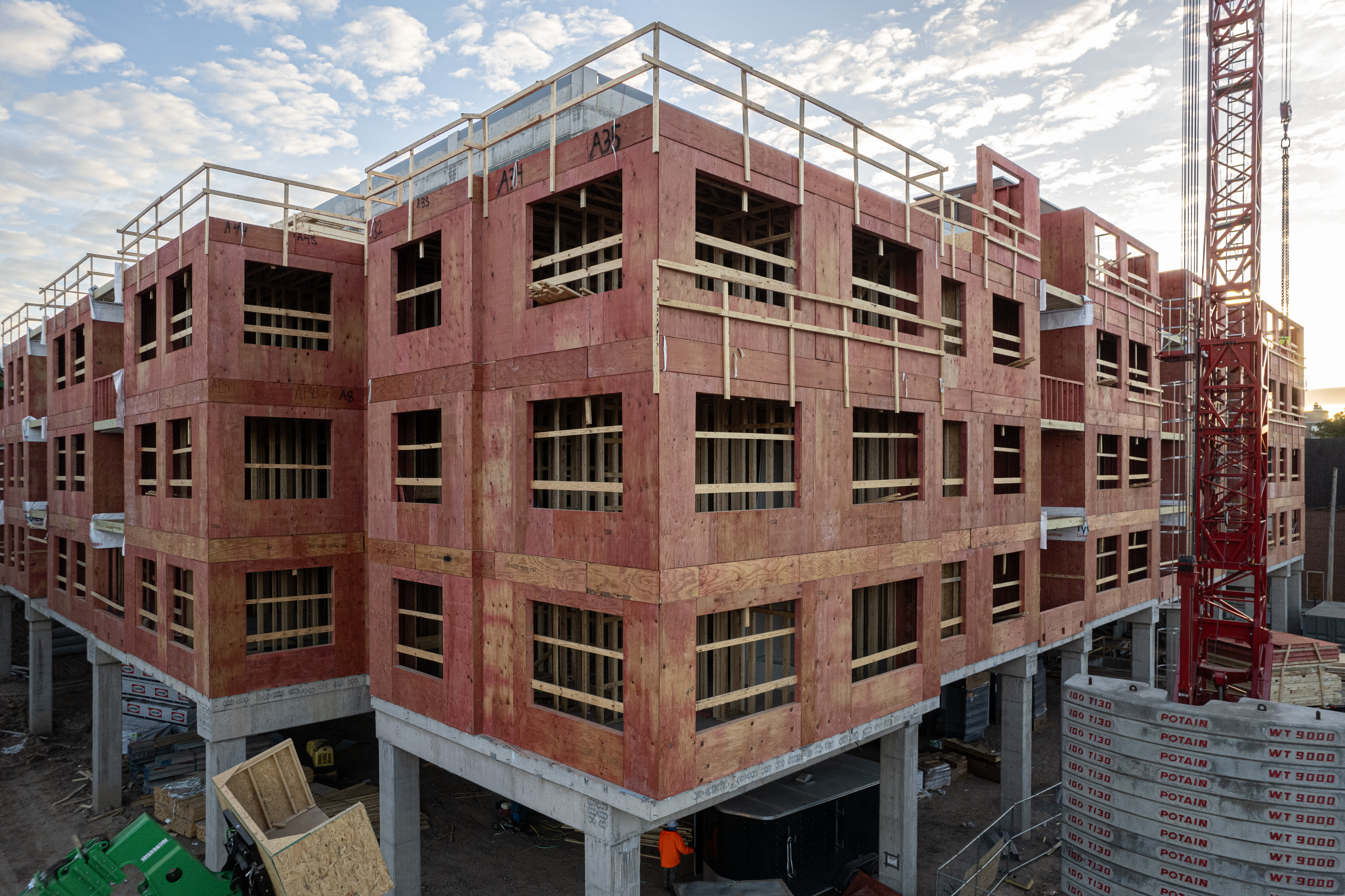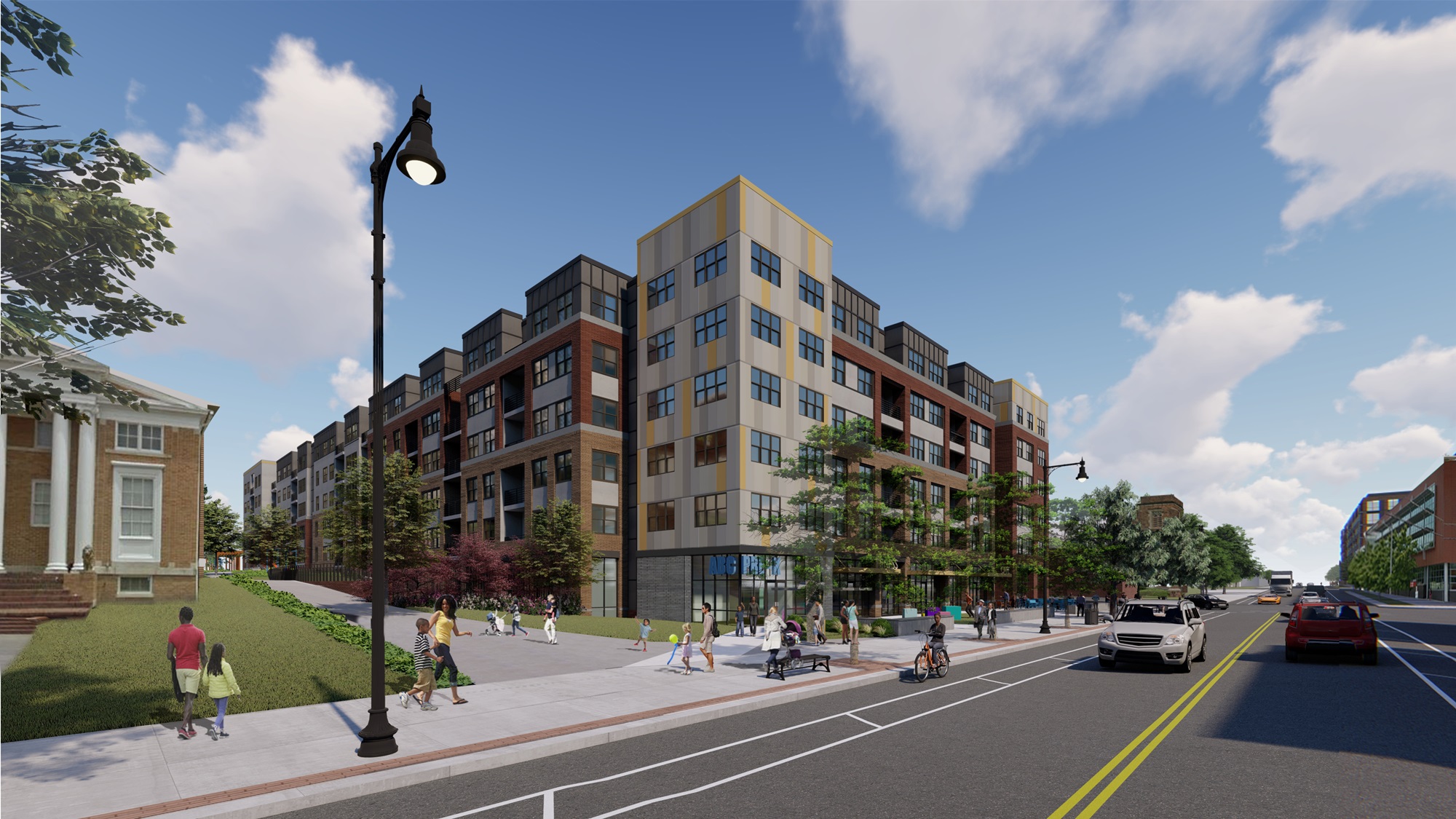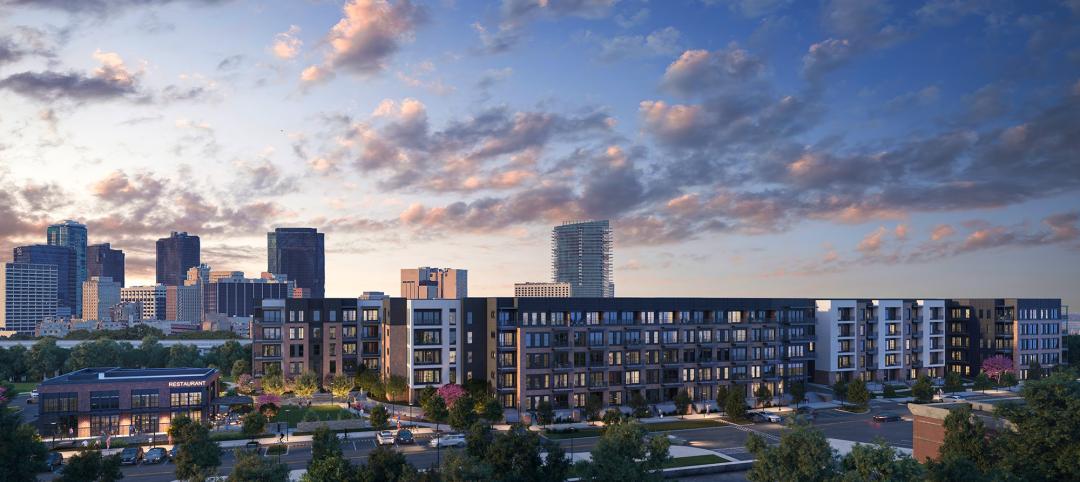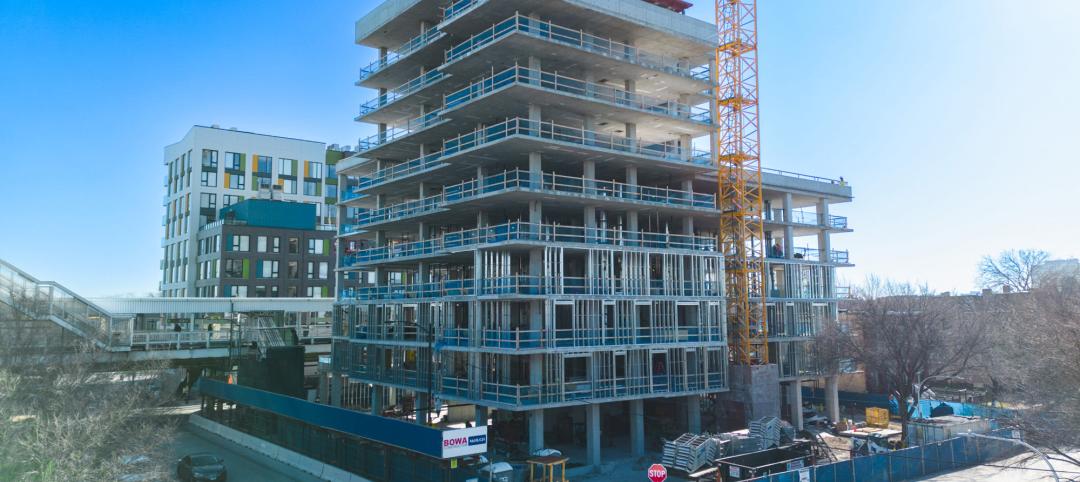In Durham, North Carolina, Laurel Street Residential planned the build of two Type III multifamily units that stood six stories high. Ian Shelton, a project manager for Neighboring Concepts, partnered with Progress Carolina and UFP Construction to frame the structure with ProWood FR fire-retardant wall assemblies. Ian spoke to the goals that were set for this project:
“The 300 East Main affordable housing project is a collaborative effort between the development team and Durham County to provide affordable living in the heart of downtown Durham... In addition to residential units, the ground floor of the housing component includes indoor and outdoor amenities as well as provisions for a future childcare space intended to serve the local community…”

Why ProWood FR?
ProWood FR fire-retardant treated products for Type III construction projects are an affordable option compared to other noncombustible materials, benefiting the economy in the area. Ian Shelton noted, “Type III construction allowed us to maximize the number of housing units on a tight urban site while meeting the projects budget constraints [and it] met the non-combustibility requirements of the building code for Type III construction while providing a more cost-effective alternative to metal stud framing.”
ProWood FR products are highly acclaimed in the industry, having received several awards, including Building Design + Construction Top Products. These reliable products are widely available and backed by a 50-year warranty. As detailed in the ICC Evaluation Services, Inc. ESR-4373, ProWood FR products meet all major model building code requirements. Additionally, they are UL-Classified with an FR-S Rating, ensuring flame spread and smoke development values of 25 or less.

ProWood FR Product Offering
BACKER BLOCK
These pre-cut blocks are used to support the installation of interior cabinets, vanities, shelving, grab rails, trim and more. And because they’re made from ProWood FR pressure-treated dimensional lumber, the holding strength is much greater than plywood.
DIMENSIONAL LUMBER and SHEATHING
ProWood FR fire-retardant-treated wood has a Class A Flame Spread Index of 25 or less, the best rating for fire-retardant building products. Flame spread rating was achieved through the ASTM E84 30-minute test. ProWood FR pressure-treated lumber and plywood have also been tested by independent accredited laboratories, following industry standards ASTM D5564 and ASTM D5516, to develop strength design factors for various use conditions.

1-HOUR WALL PANEL
ASTM E119 Tested, the 1-hour wall assembly is load bearing rated from one side (interior side only). For details refer to ESR Report 4373.
2-HOUR WALL PANEL
The code-compliant ProWood FR V343 2-hour wall assembly is manufactured under the independent third-party inspection of Underwriters Laboratories Inc. (UL), the largest and oldest independent testing laboratory in the United States. This wall assembly is fully code-compliant and meets the highest available standard, carrying UL’s FR-S designation.
The use of ProWood FR fire-retardant treated products in the construction of the two 6-story multifamily units in Durham, North Carolina, has proven to be a strategic and beneficial choice for Laurel Street Residential and its partners. By opting for ProWood FR, the project successfully met the stringent fire safety requirements while remaining within budget constraints, thereby maximizing the number of affordable housing units in a densely populated urban area. The collaboration between the project team and Durham County has resulted in a housing initiative that not only addresses the need for affordable living spaces but also provides valuable community amenities, ensuring a positive and lasting impact on downtown Durham.
Related Stories
Self-Storage Facilities | Jan 25, 2024
One-quarter of self-storage renters are Millennials
Interest in self-storage has increased in over 75% of the top metros according to the latest StorageCafe survey of self-storage preferences. Today, Millennials make up 25% of all self-storage renters.
Senior Living Design | Jan 24, 2024
Former Walgreens becomes affordable senior living community
Evergreen Real Estate Group has announced the completion of Bellwood Senior Apartments. The 80-unit senior living community at 542 25th Ave. in Bellwood, Ill., provides independent living options for low-income seniors.
Adaptive Reuse | Jan 23, 2024
Adaptive reuse report shows 55K impact of office-to-residential conversions
The latest RentCafe annual Adaptive Reuse report shows that there are 55,300 office-to-residential units in the pipeline as of 2024—four times as much compared to 2021.
Modular Building | Jan 19, 2024
Virginia is first state to adopt ICC/MBI offsite construction standards
Virginia recently became the first state to adopt International Code Council/Modular Building Institute off-site construction standards.
Mixed-Use | Jan 19, 2024
Trademark secures financing to develop Fort Worth multifamily community
National real estate developer, investor, and operator, Trademark Property Company, has closed on the land and secured the financing for The Vickery, a multifamily-led mixed-use community located on five acres at W. Vickery Boulevard and Hemphill Street overlooking Downtown Fort Worth.
Affordable Housing | Jan 18, 2024
Habitat tops off second apartment building at 43 Green
The co-developers of 43 Green celebrate the latest milestone for the $100 million, mixed-income, mixed-use project in Bronzeville: topping off Phase 2 while reaching full lease-up of the Phase 1 apartment building.
Adaptive Reuse | Jan 12, 2024
Office-to-residential conversions put pressure on curbside management and parking
With many office and commercial buildings being converted to residential use, two important issues—curbside management and parking—are sometimes not given their due attention. Cities need to assess how vehicle storage, bike and bus lanes, and drop-off zones in front of buildings may need to change because of office-to-residential conversions.
MFPRO+ News | Jan 12, 2024
Detroit may tax land more than buildings to spur development of vacant sites
The City of Detroit is considering a revamp of how it taxes property to encourage development of more vacant lots. The land-value tax has rarely been tried in the U.S., but versions of it have been adopted in many other countries.
MFPRO+ News | Jan 12, 2024
As demand rises for EV chargers at multifamily housing properties, options and incentives multiply
As electric vehicle sales continue to increase, more renters are looking for apartments that offer charging options.
Student Housing | Jan 12, 2024
UC Berkeley uses shipping containers to block protestors of student housing project
The University of California at Berkeley took the drastic step of erecting a wall of shipping containers to keep protestors out of a site of a planned student housing complex. The $312 million project would provide badly needed housing at the site of People’s Park.

















